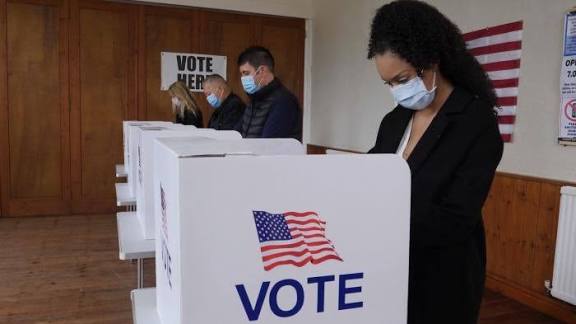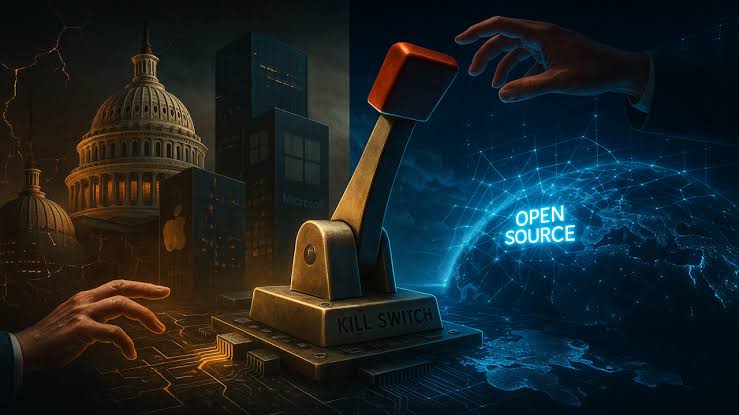Project 2025 Under Fire: Protests Surge in 30+ Cities

Several protests have been planned in state capitals and some in other cities. This movement has websites and accounts on social media. Today we will discuss about Project 2025 Under Fire: Protests Surge in 30+ Cities
Project 2025 Under Fire: Protests Surge in 30+ Cities
In recent months, opposition to Project 2025, a sweeping conservative blueprint for the U.S. government, has erupted into mass protests across more than 30 cities. What started online has grown into a nationwide demonstration movement, fueled by public concerns over the project’s implications for democracy, civil rights, and federal governmental structure.
This article explores what Project 2025 is, why it has triggered intense backlash, how protests spread to dozens of cities, and what this means for the future of American governance.
What Is Project 2025?

Project 2025, also known as the 2025 Presidential Transition Project, is a detailed policy roadmap created by the Heritage Foundation in collaboration with more than 100 conservative groups. Rather than being just a policy proposal, it is a full operational blueprint intended for a future conservative administration.
It consists of four major components:
1. A Comprehensive Policy Guide
A nearly 900-page document outlines reforms to federal agencies, covering everything from economics and immigration to civil service and environmental regulation.
2. A Personnel Database
Project 2025 includes a large-scale recruitment system for identifying and placing loyal conservatives into key government roles, replacing or bypassing traditional civil service structures.
3. A Presidential Administration Academy
This academy trains future political appointees to understand, align with, and execute the Project 2025 agenda immediately upon entering office.
4. A First-180-Days Implementation Plan
A detailed strategic plan outlines executive actions and structural reforms that could rapidly reshape the federal government soon after inauguration.
Project 2025 proposes significant changes, such as:
Overhauling or dismantling agencies including the Department of Education and various regulatory bodies
Reclassifying tens of thousands of civil service roles to allow political replacement
Consolidating executive power under the presidency
Rolling back abortion access and LGBTQ protections
Enacting a hardline immigration framework
Reducing environmental regulations and limiting the scope of the EPA
Strengthening religious-based governance approaches and conservative social policy
Supporters call it a return to “constitutional government.” Critics argue it is the most ambitious attempt in modern history to centralize executive power and reshape American civil society along ideological lines.
Why the Backlash? Understanding the Opposition
Project 2025 has sparked outrage for numerous reasons. Protestors, civil liberties groups, and political analysts cite several primary concerns:
1. Threats to Democratic Institutions
The project’s push to purge and replace career civil servants with ideological loyalists is widely seen as a threat to the stability and neutrality of federal agencies.
2. Expansion of Presidential Power
Its embrace of the “unitary executive” theory could give the president greater control over agencies like the DOJ and FBI, reducing checks and balances.
3. Rollback of Civil Rights
Proposals affecting abortion, LGBTQ rights, and religious-based exemptions have triggered fear among activists and marginalized communities.
4. Aggressive Immigration Proposals
Plans for mass deportations, expanded enforcement authority, and internal surveillance have sparked widespread alarm.
5. Environmental Deregulation
Dramatic reductions in climate protections and environmental oversight have created concern among scientists and environmental organizations.
6. Rapid Implementation Through Executive Orders
The 180-day action plan suggests sweeping changes could occur before sufficient public or legislative debate.
The Protests: How the Movement Swept 30+ Cities
The Birth of the 50501 Movement
Much of the protest energy originated from a grassroots movement known as the 50501 Movement, short for “50 states, 50 protests, one day.” It grew online, especially on platforms like Reddit and TikTok, where organizers rapidly mobilized thousands around the country.
Early in 2025, coordinated protests took place across all 50 states, with events ranging from small community gatherings to massive marches in major cities.
Top Issues Protesters Are Rallying Against
Across cities, protestors highlight similar themes:
Defense of democratic norms
Opposition to authoritarianism
Support for immigration rights
Protection of LGBTQ and reproductive rights
Rejection of large-scale executive power consolidation
Concerns about corporate and tech influence in government
In cities such as Philadelphia, Austin, Lansing, and Indianapolis, protestors carried signs reading messages like “Democracy is not a spectator sport,” “Stop Project 2025,” “No Kings,” and “Protect Our Rights.”
The Scale of the Movement
Although initial coverage focused on 30 to 50 major cities, the movement’s reach is broader:
Hundreds of local rallies have taken place in smaller towns and suburbs
Volunteer organizers created interactive maps documenting protests in over 400 cities and towns
Nationwide days of action have brought tens of thousands to the streets in coordinated efforts
In some metropolitan areas, crowd estimates reached into the tens of thousands, making these among the largest coordinated protest events since the Women’s March.
Key Organizers and Coalitions
Several major groups have been central to opposing Project 2025:
The 50501 Movement
Indivisible
MoveOn
Civil liberties organizations
Immigrant rights groups
LGBTQ advocacy networks
Labor unions and student groups
Online, activists amplify messages, share protest toolkits, and coordinate multi-city demonstrations. Many groups encourage a unified national message: stop the implementation of Project 2025 and protect democratic institutions.
Impact So Far: Are the Protests Working?
1. Public Awareness Has Skyrocketed
Project 2025 has become a mainstream topic, shifting from think-tank strategy circles to national political conversation. Many Americans learned about the plan primarily due to the protests.
2. Lawmakers Are Feeling Pressure
Members of Congress—particularly those in closely contested districts—are facing demands from constituents to resist or block the more extreme elements of Project 2025.
3. Policy Delays and Adjustments
Some proposals may be slowing as public backlash intensifies. Even conservative lawmakers have appeared cautious about endorsing the more sweeping structural reforms.
4. Grassroots Infrastructure Has Strengthened
The coordinated network created through protests is now being used for voter outreach, local organizing, and long-term advocacy.
Challenges Facing the Movement
Despite substantial momentum, the protest movement faces obstacles:
1. Maintaining Long-Term Engagement
Protest energy often fades after initial surges. Sustained organizing is necessary to influence policy.
2. Media Fatigue
As protests become frequent, national media coverage can decline, limiting visibility.
3. Political Polarization
Supporters of Project 2025 frame the protests as extremist or partisan, which can undermine public support.
4. Legislative Gridlock
Even with public pressure, Congress may not block executive changes if political alignment favors the administration.
What’s at Stake: The Future of American Democracy
Project 2025 and the protests against it represent a profound conflict about the direction of the country. Key issues include:
Separation of Powers
Critics argue the project would weaken checks and balances by consolidating executive authority.
Independence of Federal Agencies
Replacing civil service experts with political appointees could compromise the neutrality and professionalism of major institutions.
Civil and Social Rights
Proposals affecting reproductive rights, LGBTQ protections, and religious-based policies could dramatically reshape civil liberties.
Immigration and Enforcement
Policies calling for mass deportation and expanded enforcement powers could fundamentally alter immigrant communities and the justice system.
Environmental Protection
Reducing environmental oversight may have long-term consequences for climate policy and public health.
Civic Engagement
The protests signal renewed grassroots mobilization. Whether it leads to sustained political influence or becomes a short-term reaction remains a critical question.
Conclusion
Project 2025 stands as one of the most comprehensive conservative governing blueprints ever produced. Its ambition—to reshape the federal government, civil service, and American society—has sparked an equally ambitious wave of resistance.
Protests in more than 30 cities highlight a national movement determined to challenge what many view as a threat to democratic norms. Whether this opposition can halt or reshape Project 2025 will depend on sustained civic action, political pressure, and the resilience of American democratic institutions.
For now, the message from communities across the country is united and unmistakable: Project 2025 will not go unchallenged.
How useful was this post?
Click on a star to rate it!
Average rating 0 / 5. Vote count: 0
No votes so far! Be the first to rate this post.
About the Author
usa5911.com
Administrator
Hi, I’m Gurdeep Singh, a professional content writer from India with over 3 years of experience in the field. I specialize in covering U.S. politics, delivering timely and engaging content tailored specifically for an American audience. Along with my dedicated team, we track and report on all the latest political trends, news, and in-depth analysis shaping the United States today. Our goal is to provide clear, factual, and compelling content that keeps readers informed and engaged with the ever-changing political landscape.



